Invited Speakers - A Closer Look
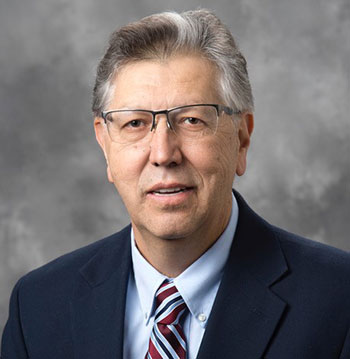 MAA-SIAM-AMS Hrabowski-Gates-Tapia-McBay Lecture
MAA-SIAM-AMS Hrabowski-Gates-Tapia-McBay Lecture
On the Discrete Hilbert Transform
Wednesday, January 16, 2019, 9:00 a.m.- 9:50 a.m. Room 307, Baltimore Convention Center
Rodrigo Bañuelos, Purdue University
The discrete Hilbert transform, acting on the space of (doubly infinite) sequences, was introduced by David Hilbert at the beginning of the 20th century. It is the discrete analogue of the continuous Hilbert transform (conjugate function) acting on functions on the real line. In 1925, M. Riesz proved the $L^p$ boundedness, for $p$ larger than one and finite, of the continuous version, thereby solving a problem of considerable interest at the time. From this he deduced the same result for the discrete version. Shortly thereafter, E.C. Titchmarsh turned this around. He gave a direct proof of the boundedness of the discrete Hilbert transform on $\ell^p$ and from it deduced the same for the continuous version. Further, he showed that the discrete and continuous versions have the same $p$-norms. Unfortunately, the following year Titchmarsh pointed out that his argument for equality of the norms was incorrect. The problem of equality has been a long-standing conjecture since. In this lecture we describe—taking a historical point of view and avoiding technicalities as much as possible—some tools from probability theory that lead to a proof of this conjecture. The talk is based on joint work with Mateusz Kwasnicki of Wroclaw University, Poland.
 AMS Invited Address
AMS Invited Address
Algebraic, Geometric, and Topological Methods in Optimization
Wednesday, January 16, 2019, 10:05 a.m.- 10:55 a.m. Ballrooms I & II, 400 Level, Baltimore Convention Center
Jesus A. De Loera, University of California, Davis
Optimization is the part of applied mathematics that seeks the best answer or optimal element, according to an objective function or optimization criterion, from among a domain of many possible solution values. This could mean the shortest path on a network, the optimal assignment of jobs in a company, or the best distribution of fire stations in a city. Optimization is at the core of techniques in machine learning, bioinformatics, management and operations planning, finances, and many other areas.
Mathematical optimization began to develop steadily only in the 1940’s with contributions of mathematicians like George Dantzig, Ralph Gomory, John von Neumann, Harold Kuhn, Albert W. Tucker, and other pioneers. In my talk I wish to recount, through independent examples, how algebraic, geometric, and topological techniques have brought recent advances to the theory of optimization.
In my examples I will show how a rich mixture of algebraic geometry, convex and tropical geometry, and combinatorial topology appears in the analysis of algorithms for the linear optimization problem. My survey talk will be accessible to non-experts and students, who are encouraged to come and see how the dividing line between pure and applied mathematics can be erased.
See video of this talk here:
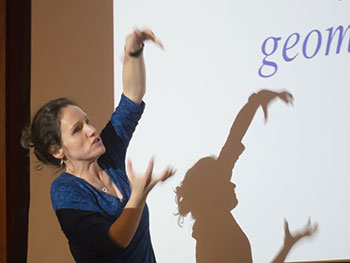 AMS-MAA Invited Address
AMS-MAA Invited Address
What is the Shape of a Rational Map?
Wednesday, January 16, 2019, 11:10 a.m.- 12:00 a.m. Ballrooms I & II, 400 Level, Baltimore Convention Center
Sarah Koch, University of Michigan
One aspect of complex dynamical systems concerns the study of iterating rational maps on the Riemann sphere. A wealth of complicated and deep behavior can emerge when a rational map is iterated; this behavior is governed by the orbits of the critical points of the map under iteration. A rational map is said to be postcritically finite if every critical point eventually maps into a periodic cycle. Postcritically finite maps are particularly nice to study and are of central importance in complex dynamics. Loosely speaking, in the space of all rational maps, those that are postcritically finite play a role akin to the rational numbers in the reals. In this talk, we explore potential answers to the question in the title that come from complex dynamics, focusing on postcritically finite rational maps.
Material in this talk is based on joint work with: X. Buff and A. Epstein, and with L. DeMarco and C. McMullen.
See video of this talk here:
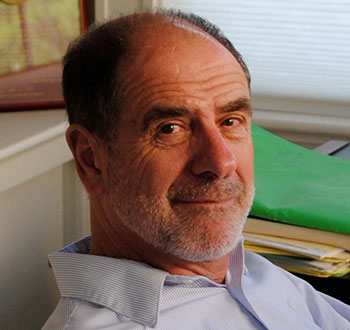 AMS Colloquium Lectures
AMS Colloquium Lectures
LECTURE I
Complex Multiplication: Past, Present, Future
Wednesday, January 16, 2019, 1:00 p.m..- 1:50 p.m. Ballrooms I & II, 400 Level, Baltimore Convention Center
Benedict H. Gross, University of California San Diego
The theory of complex multiplication, which studies both the arithmetic of elliptic curves and orders in imaginary quadratic fields, has a distinguished history. In the first lecture, I will recall the roots of this theory, starting with the ideas of Euler, Lagrange, and Gauss. I will review the main results obtained in the nineteenth century, and will end with a discussion of Heegner’s paper on the class number one problem.
See video of this talk here:
LECTURE II
Complex Multiplication: Past, Present, Future
Thursday, January 17, 2019, 1:00 p.m.- 1:50 p.m. Ballrooms I & II, 400 Level, Baltimore Convention Center
Benedict H. Gross, University of California San Diego
In this talk, I will discuss major developments in the theory of complex multiplication which occurred in the second half of the twentieth century. These involve the L-functions of elliptic curves, as well as the study of special points on modular curves. I will review the conjecture of Birch and Swinnerton-Dyer, and discuss several ways that the theory of complex multiplication has been used to provide strong evidence for it.
See video of this talk here:
LECTURE III
Complex Multiplication: Past, Present, Future
Friday, January 18, 2019, 1:00 p.m.- 1:50 p.m. Ballrooms I & II, 400 Level, Baltimore Convention Center
Benedict H. Gross, University of California San Diego
In this talk, I will present some of the exciting developments which have occurred in the theory of complex multiplication in the twenty-first century. In particular, I hope to show that this venerable subject is still very much alive.
See video of this talk here:
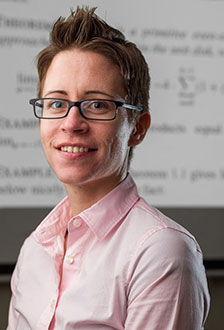 MAA Invited Address
MAA Invited Address
Symmetry, Almost
Wednesday, January 16, 2019, 2:15 p.m.- 3:05 p.m. Ballrooms I & II, 400 Level, Baltimore Convention Center
Amanda Folsom, Amherst College
Some definitions of the word symmetry include “correct or pleasing proportion of the parts of a thing," “balanced proportions," and “the property of remaining invariant under certain changes, as of orientation in space." One might think of snowflakes, butterflies, and our own faces as naturally symmetric objects — or at least close to it. Mathematically one can also conjure up many symmetric objects: even and odd functions, fractals, certain matrices, and modular forms, a type of symmetric complex function. All of these things exhibit a kind of beauty in their symmetries, so would they lose some of their innate beauty if their symmetries were altered? Alternatively, could some measure of beauty be gained with slight symmetric imperfections? We will explore these questions guided by the topic of modular forms and their variants. What can be gained by perturbing modular symmetries in particular? We will discuss this theme from past to present: the origins of these questions have their roots in the first half of the 20th century, dating back to Ramanujan and Gauss, while some fascinating and surprising answers come from just the last 15 years.
See video of this talk here:
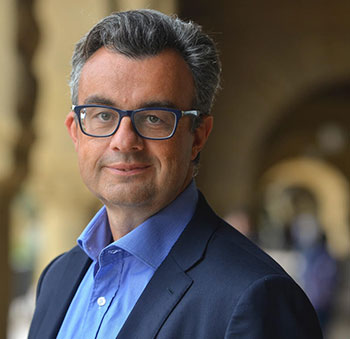 MAA Invited Address ***CANCELLED***
MAA Invited Address ***CANCELLED***
Sailing Through Data: Discoveries and Mirages
Wednesday, January 16, 2019, 3:20 p.m.- 4:10 p.m. Ballrooms I & II, 400 Level, Baltimore Convention Center
Emmanuel Candes, Stanford University
For a long time, science has operated as follows: a scientific theory can only be empirically tested, and only after it has been advanced. Predictions are deduced from the theory and compared with the results of decisive experiments so that they can be falsified or corroborated. This principle formulated by Karl Popper and operationalized by Ronald Fisher has guided the development of scientific research and statistics for nearly a century. We have, however, entered a new world where large data sets are available prior to the formulation of scientific theories. Researchers mine these data relentlessly in search of new discoveries and it has been observed that we have run into the problem of irreproducibilty. Consider the April 23, 2013 Nature editorial: “Over the past year, Nature has published a string of articles that highlight failures in the reliability and reproducibility of published research.” The field of Statistics needs to re-invent itself to adapt to the new reality where scientific hypotheses/theories are generated by data snooping. We will make the case that statistical science is taking on this great challenge and discuss exciting achievements. In particular, we will introduce the method of knockoffs, which reliably selects which of the many potentially explanatory variables of interest (e.g. the absence or not of a mutation) are indeed truly associated with the response under study (e.g. the risk of getting a specific form of cancer).
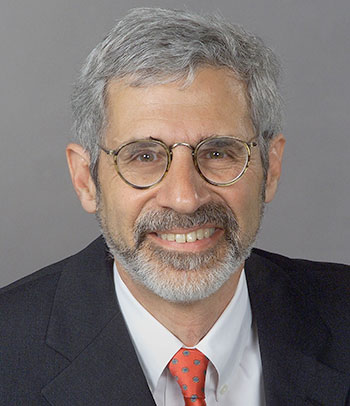 AMS Josiah Willard Gibbs Lecture
AMS Josiah Willard Gibbs Lecture
Immunology for Mathematicians
Wednesday, January 16, 2019, 8:30 p.m.- 9:20 p.m. Ballrooms I & II, 400 Level, Baltimore Convention Center
Alan S. Perelson, Los Alamos National Laboratory
The immune system is a complex distributed system of interacting cells and molecules that learns, exhibits memory and most importantly protects us from infectious disease. While we are still uncovering how the immune system works, I will show through a variety of examples that it provides a fertile ground for interesting mathematical problems, from the understanding of how the immune system can recognize an almost limitless number of pathogens including some never seen before in all of evolutionary history, to the design of computer immune systems to protect against computer viruses, to the choice of next season’s flu vaccine.
See video of this talk here:
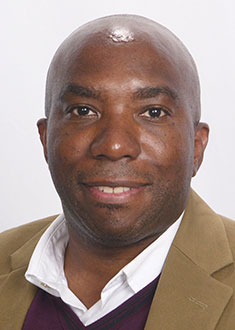 MAA Invited Address
MAA Invited Address
A Dream Deferred: 50 Years of Blacks in Mathematics
Thursday, January 17, 2019, 9:00 a.m.- 9:50 a.m. Ballrooms I & II, 400 Level, Baltimore Convention Center
Edray Herber Goins, Pomona College
In 1934, Walter Richard Talbot earned his Ph.D. from the University of Pittsburgh; he was the fourth African American to earn a doctorate in mathematics. His dissertation research was in the field of geometric group theory, where he was interested in computing fundamental domains of action by the symmetric group on certain complex vector spaces. Unfortunately, opportunities for African Americans during that time to continue their research were severely limited. “When I entered the college teaching scene, it was 1934," Talbot is quoted as saying. “It was 35 years later before I had a chance to start existing in the national activities of the mathematical bodies." Concerned with the exclusion of African Americans at various national meetings, Talbot helped to found the National Association of Mathematicians (NAM) in 1969.
In this talk, we take a tour of the mathematics done by African and African Americans over the past 50 years since the founding of NAM, weaving in personal stories and questions for reflection for the next 50 years.
See video of this talk here:
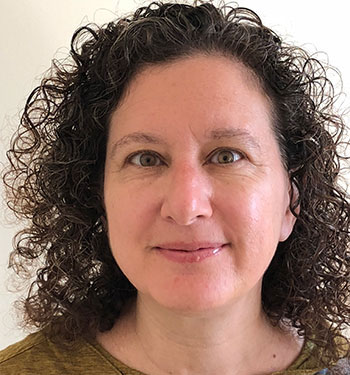 AWM-AMS Noether Lecture
AWM-AMS Noether Lecture
Dynamics of Systems with Low Complexity
Thursday, January 17, 2019, 10:05 a.m.- 10:55 a.m. Ballrooms I & II, 400 Level, Baltimore Convention Center
Bryna Kra, Northwestern University
One way to classify dynamical systems is by their entropy, which roughly speaking gives a measure of the disorder in the system. Deterministic systems have zero entropy, but in spite of this structure, many basic questions about systems with zero entropy remain open. Even when placing strong constraints on the complexity of the system, easily formulated questions remain intractable. I will give an overview of the relations among complexity, algebraic properties, and dynamical characteristics of the system (such as periodicity, minimality, and transitivity), and their relations to combinatorial problems.
See video of this talk here:
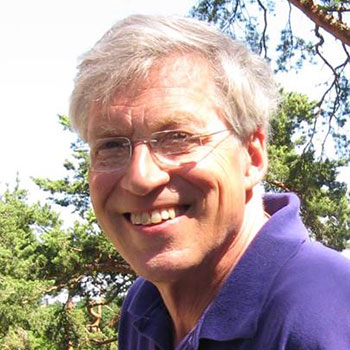 MAA Project NExT Lecture on Teaching and Learning
MAA Project NExT Lecture on Teaching and Learning
Reflections on Teaching Calculus for the First Time, 45 Times
Thursday, January 17, 2019, 11:00 a.m.- 11:50 a.m. Room 309/310, Baltimore Convention Center
David Bressoud, Macalester College
I first taught calculus as a graduate student in 1974. Over the years, I have continually renewed my understanding of how to teach it. This has been the result of insights gained through contact with the Calculus Reform movement, the AP Program, and some great high school teachers; by writing textbooks on advanced calculus and real analysis; with participation in Macalester's program of recasting calculus as a modeling course; from the MAA's national studies of calculus instruction; and via my personal dives into the history of the subject. This talk will be an invitation to join in this exploration of how calculus can—and maybe should—be taught.
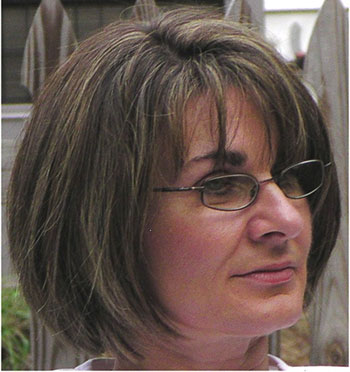 SIAM Invited Address
SIAM Invited Address
Development of Mathematical Methods for Next Generation Stent Design
Thursday, January 17, 2019, 11:10 a.m. - 12:00 p.m. Ballrooms I & II, 400 Level, Baltimore Convention Center
Suncica Canic, University of California Berkeley
Over the past 30 years, non-surgical, percutaneous coronary interventions with stent implantation transformed the practice of cardiology. Before the introduction of drug eluting stents (DES), bare metal stents (BMS) were the only choice. DES have led to a significant reduction in in-stent restenosis rates, one of the major limitations of BMS. There is an on-going effort to continue to improve the current generation stents with thinner struts, lesion-dependent geometric designs for complicated lesions, better biocompatible polymer use for coating, biodegradable polymer, or polymer-free stents with porous-metal coating or nanoparticle-mediated drug delivery systems. In this talk we will review the state-of-the-art mathematical methods and models that are being developed to guide the next generation stent design. The methodology includes nonlinear moving boundary problems to study fluid-structure interaction between implanted stents, blood flow, and coronary artery elastodynamics, novel poroelastic, composite structural models to study drug diffusion and chemical reaction with vascular tissue, hyperbolic PDE models defined on graphs to study optimal geometric stent design, and Smoothed-Particle Hydrodynamics approaches to study nanoparticle-mediated drug delivery systems.
See video of this talk here:
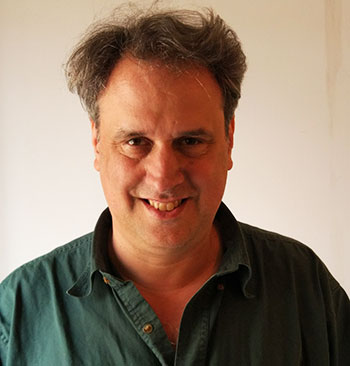 AMS Invited Address
AMS Invited Address
From Knots to Symplectic Geometry and Algebra
Thursday, January 17, 2019, 2:15 p.m. - 3:05 p.m. Ballrooms I & II, 400 Level, Baltimore Convention Center
Peter Ozsvath, Princeton University
Heegaard Floer homology is an invariant for three-manifolds which is inspired by gauge theory and defined using the theory of pseudo-holomorphic curves. Knot Floer homology is a variant of this construction, giving an invariant for knots in three-space. It has the form of a bigraded vector space, encoding interesting topological information about the knot. After explaining the basic form of knot Floer homology, and giving some of its applications, I will present a recent algebraic description of knot Floer homology, discovered in joint work with Zoltan Szabo, building on earlier joint work with Robert Lipshitz and Dylan Thurston.
See video of this talk here:
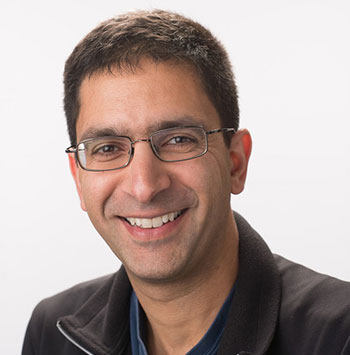 AMS Invited Address
AMS Invited Address
A Mathematical Introduction to the Molecular Biology of the Cell
Thursday, January 17, 2019, 3:20 p.m. - 4:10 p.m. Ballrooms I & II, 400 Level, Baltimore Convention Center
Lior Pachter, California Institute of Technology
Since the beginning of molecular biology in the 1930s, there has been great interest in developing mathematical models of the workings of the cell. During the past 50 years the molecular components of the cell have increasingly come into view, and during the past decade high-throughput sequencing based technologies have provided the opportunity to measure cell states in unprecedented resolution. Together, these developments have resulted in increasingly accurate mathematical models of the molecular biology of the cell. These promise to not only enhance our understanding of gene regulation, but also to allow for the prediction of the effect of perturbations in disease states. The current challenges for mathematics are exciting, and I will review the necessary background needed to engage in the field.
See video of this talk here:
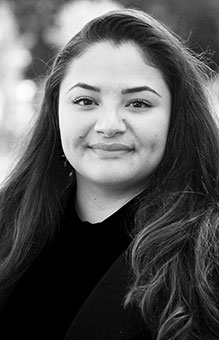 MAA Invited Address
MAA Invited Address
A Mathematical Journey of Culture, Community, and Collaboration
Friday, January 18, 2019, 9:00 a.m.- 9:50 a.m. Ballrooms I & II, 400 Level, Baltimore Convention Center
Pamela Harris, Williams College
It wasn’t until the last year of my graduate program that I met another Latina Ph.D. mathematician. Before this I thought that I may be the only Latina working on a Ph.D. in the mathematical sciences. Of course this was silly, as I could have simply searched the words “Latinas in math” to discover Ruth Gonzalez, the first US born Hispanic woman who earned a Ph.D. in mathematics. The year? 1986 – during my life time.
As a first generation college student and a dreamer, the experience of not knowing people of similar cultural and socioeconomic backgrounds working in academia, affected my confidence and belief that I could become a mathematician. I often felt isolated and unsure of my abilities to succeed in this field. However, these experienced positively impacted my goals as an educator. In this talk I’ll share how, through my teaching, I aim to instill mathematical confidence in all students, and how learning and research communities help develop a culture of continuous improvement and collective responsibility.
See video of this talk here:
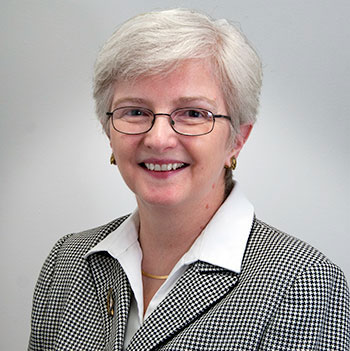 AMS Invited Address
AMS Invited Address
The Roaring Twenties in American Mathematics
Friday, January 18, 2019, 10:05 a.m.- 10:55 a.m. Ballrooms I & II, 400 Level, Baltimore Convention Center
Karen Hunger Parshall, University of Virginia
World War I served as a break in business as usual within the American mathematical research community. In its after- math, American mathematicians had the sense, in Oswald Veblen’s words, of entering into ”a new era in the development of our science.” To that end, ”[e]very nerve,” according to Roland Richardson, ”should be strained to get our research back on its feet.” These and others poured themselves into their work in the 1920s, but what did that mean? What were their main research interests? Where were those interests fostered? What, in short, was the lay of the American mathematical research landscape in the 1920s? This talk will explore the answers to these questions.
See video of this talk here:
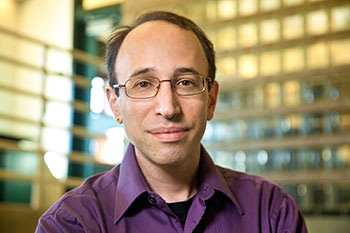 AMS-MAA Invited Address
AMS-MAA Invited Address
Miracles of Algebraic Graph Theory
Friday, January 18, 2019, 11:10 a.m.- 12:00 p.m. Ballrooms I & II, 400 Level, Baltimore Convention Center
Daniel Spielman, Yale University
I will never forget the feeling of awe I experienced as a student when I first learned that important properties of graphs are revealed by the eigenvalues and eigenvectors of their associated matrices. This talk should convey some of that feeling, but also provide some understanding and intuition.
We begin by thinking of graphs as networks of springs and by using Laplacians matrices to model them. Hall (1970) and Tutte (1963) showed that eigenvectors of and linear equations in the Laplacian can be used to obtain nice pictures of many graphs. A nice picture must encode important properties.
More intuition comes from considering the matrices that model random walks on graphs. Cheeger's inequality (1970) for graphs relates eigenvalues of the walk matrix to the conductance of a graph. The conductance of a graph measures how easily it can be partitioned, and is the foundation of some of the most important ways of discovering graph structure.
Babai, Grigoryev, and Mount (1982) showed how to efficiently use a graph's eigenvectors to determine whether or not it is isomorphic to another graph, provided that no eigenspace has large dimension.
We will survey these results, explain some fascinating proof techniques used to prove them, and describe some advances in this area.
See video of this talk here:
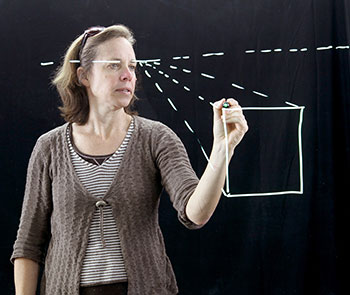 MAA Lecture for Students
MAA Lecture for Students
Drawing Conclusions From Drawing A Square
Friday, January 18, 2019, 1:00 p.m.- 1:50 p.m. Room 309/310, Baltimore Convention Center
Annalisa Crannell, Franklin & Marshall College
The Renaissance famously brought us amazingly realistic perspective art. Creating that art was the spark from which projective geometry caught fire and grew. This talk looks directly at projective geometry as a tool to illuminate the way we see the world around us, whether we look with our eyes, with our cameras, or with the computer (via our favorite animated movies). One of the surprising results of projective geometry is that it implies that every quadrangle (whether convex or not) is the perspective image of a square. We will describe implications of this result for computer vision, for photogrammetry, for applications of piece-wise planar cones, and of course for perspective art and projective geometry.
Current Events Bulletin Session
Friday, January 18, 2019, 1:00 p.m.- 5:00 p.m. Room 307, Baltimore Convention Center
Perfectoid Geometry and its Applications
Friday, January 18, 2019, 1:00 p.m. Room 307, Baltimore Convention Center
Bhargav Bhatt, University of Michigan
There is a strong and classical analogy, linking number theory and algebraic geometry, between the field of rational numbers and the field of rational functions in one variable. Perfectoid geometry animates this analogy by providing a context where one can treat a (fixed) prime number like a variable. The resulting notion has helped solve long-standing problems in diverse areas of mathematics---not just in number theory and algebraic geometry, but also commutative algebra and algebraic topology. In this talk, I will explain the definition of a perfectoid ring and discuss some applications.
Verifying Quantum Computations at Scale: A Cryptographic Leash on Quantum Devices
Friday, January 18, 2019, 2:00 p.m. Room 307, Baltimore Convention Center
Thomas Vidick, Caltech
Quantum computers are physical devices that leverage the laws of quantum mechanics to accomplish certain computations, such as the simulation of certain physical, chemical, or biological systems, in an exponentially more efficient way than can be achieved by the best classical methods. By its very nature, the outcome of such a computation cannot be predicted by a classical computer. Moreover, there is strong evidence that the outcome cannot even be verified by classical means. How can we, classical beings, tell if the quantum device produced the right prediction? What checks can be placed on the performance of devices whose computational power all but eludes us?
This question is made all the more urgent by recent advances in practical quantum devices. In this talk I will formulate the question precisely using the language of complexity theory, and present a recent resolution, by Urmila Mahadev, that combines the theory of interactive proofs with insights from cryptography and quantum information. I will not assume any background in complexity, cryptography, or quantum information, but instead aim to highlight how beautiful ideas from these areas combine to provide an insightful solution to a seemingly intractable problem.
The Shuffle Conjecture
Friday, January 18, 2019, 3:00 p.m. Room 307, Baltimore Convention Center
Stephanie van Willigenburg, University of British Columbia
This talk assumes no prior knowledge, and will be accessible to undergraduates.
Walks in the plane taking unit-length steps north and east from $(0, 0)$ to $(n, n)$ never dropping below $x = y$, and parking cars subject to preferences, are two intriguing ingredients in a formula conjectured in 2005, now famously known as the shuffle conjecture.
Here we describe the combinatorial tools needed to state the conjecture. We also give key parts and people in its history, including its eventual algebraic solution by Carlsson and Mellit, which was published in the Journal of the American Mathematical Society in 2018. Finally, we conclude with some remaining open problems.
Tangent Developable Surfaces and the Equations Defining Algebraic Curves
Friday, January 18, 2019, 4:00 p.m. Room 307, Baltimore Convention Center
Robert Lazarsfeld, Stony Brook University
In the early 1980's, Mark Green made a very influential conjecture about the defining equations and higher syzygies of canonically embedded projective algebraic curves. While the conjecture remains open in general, Voisin settled the generic case in two breakthrough papers appearing about fifteen years ago. Very recently, Aprodu, Farkas, Papadima, Raicu and Weyman gave a simple new proof of Voisin's theorem. Their work revolves around the analysis of a very classical geometric object, namely the tangent developable surface of a rational normal curve. In this talk aimed at non-experts, I will survey this circle of ideas.
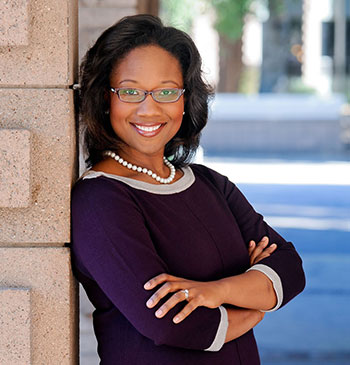 NAM Cox-Talbot Lecture
NAM Cox-Talbot Lecture
A Seat at the Table: Equity and Social Justice in Mathematics Education
Friday, January 18, 2019, 7:45 p.m.-8:35 p.m. Holiday Ballroom 6, Hilton
Talithia Denese Williams, Harvey Mudd College
As mathematics educators, we pride ourselves in our ability to communicate the beauty of mathematics to our students. To watch a student’s face light up over a clever proof or robust statistical model still gives me goosebumps. And it’s often the students who are bright eyed and eager that I invite to the metaphorical mathematical table: sending them REU announcements, financial analyst summer opportunities or graduate school suggestions. Over time, I realized that I wasn’t allowing my students to engage in mathematics in ways that were meaningful to them. Although well intentioned, my classrooms were far from “mathematically inclusive”. In recent years, I’ve learned to build upon my students’ identity and lived experiences by incorporating rigorous, relevant mathematical experiences into the classroom environment. These experiences not only provide deep mathematical learning, but also give students the mathematical knowledge to advocate for justice in our communities. By creating inclusive classrooms and promoting classroom experiences that are equitable, we can change the culture of mathematics. In this talk, I’ll share the tangible ways in which we can invite our students to have a seat at the mathematical table and in doing so, work to broaden participation in mathematics.
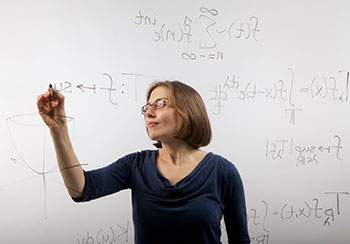 AMS Invited Address
AMS Invited Address
On Torsion Subgroups in Class Groups of Number Fields
Saturday, January 19, 2019, 9:00 a.m.- 9:50 a.m. Ballrooms I & II, 400 Level, Baltimore Convention Center
Lillian Pierce, Duke University
Imagine an hourglass: within one bulb, we picture analytic number theory; within the other, algebraic number theory. Pincered in between is the class number. As we imagine this hourglass, we visualize information trickling back and forth between the two fields, passing via the class number. And yet the constriction of the pinched neck suggests a certain inaccessibility...
Each number field has an associated class number, which measures the cardinality of the field’s class group—a finite abelian group that encodes information about how arithmetic behaves within the field. It is natural to think of number fields in families—for example, all number fields of a fixed degree.
Correspondingly, we can ask about the distribution of the class number, or of the class group, as the field varies over a family. Tantalizingly precise conjectures have been formulated, but remain out of reach.
We will describe a diverse array of recent work, with a particular focus on counting elements of a fixed order within the class group, that is, bounding the size of torsion subgroups. True to the hourglass shape we first envisioned, it turns out that this question is closely connected to deep open questions on both sides, including counting number fields, and the Generalized Riemann Hypothesis.
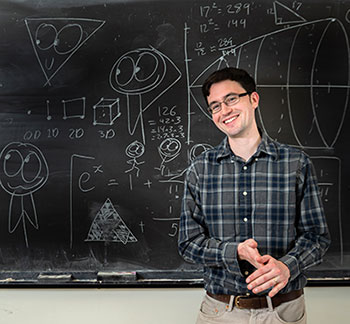 MAA Lecture for Students & Teachers
MAA Lecture for Students & Teachers
Tic-Tac-Toe (or, What is Mathematics?)
Saturday, January 19, 2019, 10:00 a.m.- 10:50 a.m. Room 309/310, Baltimore Convention Center
Ben Orlin, Math with Bad Drawings
Once at a picnic, I saw some mathematicians playing the last game I would have expected: tic-tac-toe. With time, I realized that their version - more complex than the usual kind! - embodies the same magic as all of mathematics, from imaginary numbers to non-Euclidean geometry.
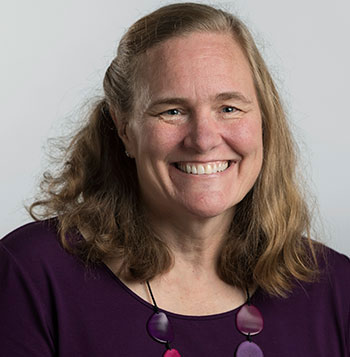 MAA Retiring Presidential Address
MAA Retiring Presidential Address
The Inclusion Principle: The Importance of Community in Mathematics
Saturday, January 19, 2019, 10:00 a.m.- 10:50 a.m. Ballrooms I & II, 400 Level, Baltimore Convention Center
Deanna Haunsperger, Carleton College
It’s easy to think that what matters in mathematics is just the mathematics; we don’t always recognize the importance of feeling like we belong to a mathematical community. In this talk I’ll point out the existence and importance of many mathematical communities and how they function to support all mathematicians and help keep young mathematicians in the profession.
See video of this talk here:
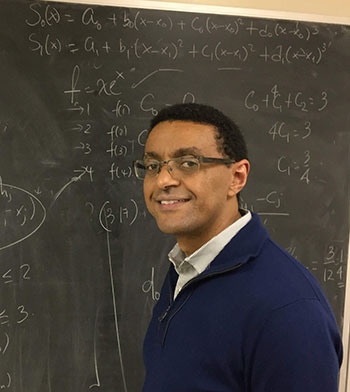 NAM Claytor-Woodard Lecture
NAM Claytor-Woodard Lecture
On Mathematical Problems in Geometric Optics
Saturday, January 19, 2019, 1:00 p.m. - 1:50 p.m. Room 316, Baltimore Convention Center
Henok Mawi, Howard University
Mathematical problems in geometric optics which deal with determining a surface that is capable of reshaping a light beam from a source with a given illumination intensity into a prescribed intensity distribution on a target, have in recent years received a lot of attention. Interest to investigate several theoretical and numerical aspects of these inverse problems has risen mainly because the techniques used in their analysis interweave ideas from the mathematics of mass transportation theory, calculus of variations and nonlinear partial differential equations of Monge-Amp\`ere type. In this talk we will discuss an overview of these problems and describe an iterative method for approximating a solution to one such problem called the refractor problem. This is a joint work with Roberto De Leo and Cristian Guti\'errez.
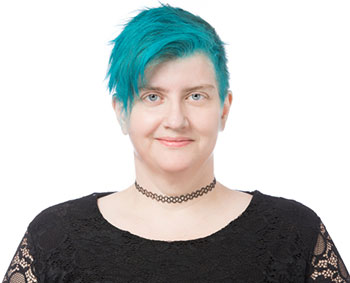 MAA-AMS-SIAM Gerald and Judith Porter Public Lecture
MAA-AMS-SIAM Gerald and Judith Porter Public Lecture
Big Data, Inequality, and Democracy
Saturday, January 19, 2019, 3:00 p.m.- 4:00 p.m. Ballrooms I & II, 400 Level, Baltimore Convention
Cathy O’Neil, ORCAA
We live in the age of the algorithm. Increasingly, the decisions that affect our lives—where we go to school, whether we get a job or a car loan, how much we pay for health insurance, what news we see on social media—are being made not by humans, but by mathematical models. The models being used today are opaque, unregulated, and uncontestable, even when they’re wrong. The increase inequality and threaten democracy.
What's worse is they're defended as fair and objective in the name of mathematics. What can the mathematical community do about this? How can we surface the moral questions and address the technical ones? Cathy will discuss some ideas along these lines.
- JMM 2019 Home
- Mobile App
Download the Mobile App - JMM Daily Newsletter
- JMM Survey Post Meeting Survey
Your Opinion Counts!

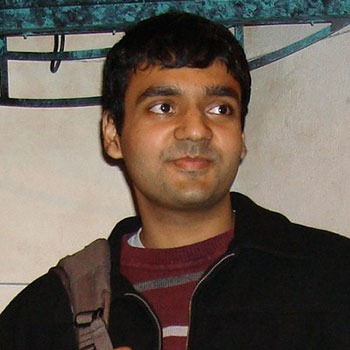 LECTURE I
LECTURE I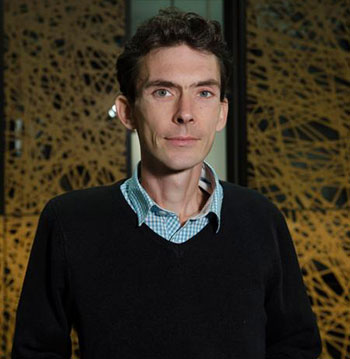 LECTURE II
LECTURE II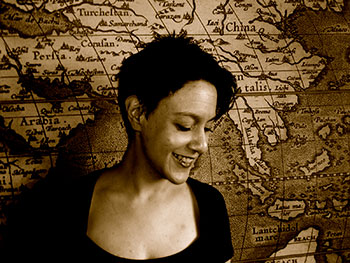 LECTURE III
LECTURE III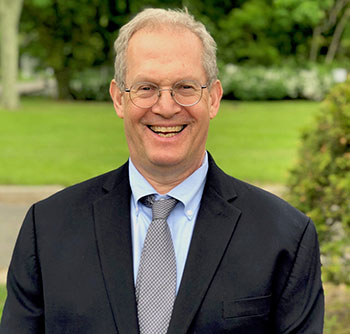 LECTURE IV
LECTURE IV